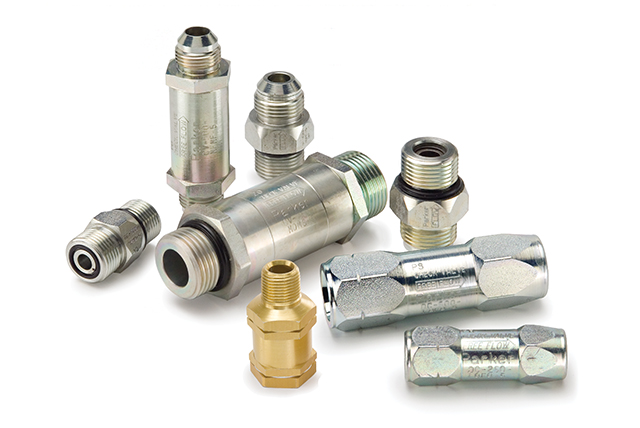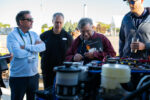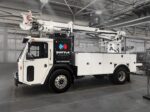Truck engine manufacturers continue to face more stringent requirements than ever related to efficiency and emissions. As a result, the pursuit of new ideas and technologies to meet these challenges is ongoing.
Whether they realize it, solutions may be under their noses as they design and build truck engines.
CHECK VALVES AS FUEL PRESSURE REGULATORS
Engine manufacturers often use a check valve to allow the flow of fluids to move in only one direction. It’s the traffic cop of a fuel system.
One could find these valves in almost every mobile and industrial hydraulic system. If there’s a pump, you’ll likely find a check valve that’s preventing backflow from damaging upstream componentry.
But in addition to performing this function, check valves now take on responsibilities they weren’t designed for, showcasing their flexibility.
OEM engine manufacturers are now using Parker check valves as fuel pressure regulators in their Class 8 trucks. These include big rigs that weigh more than 33,001 lbs, as well as construction vehicles like cement and dump trucks.
These check valves don’t just control the fuel flow’s direction but also the amount of fuel delivered to the engine.
MEETING TIER 4 EMISSIONS COMPLIANCE
“This is a key development we’ve been seeing because in a fuel delivery system, fuel regulation is critical,” says Cameron Koller, market development manager for Parker’s Quick Coupling Division. “It’s important because check valves acting as fuel pressure regulators are helping OEMs meet Tier 4 compliance, which is the most recent engine emissions standard implemented by the Environmental Protection Agency.”
Signed in 2004, Tier 4 emissions standards phased in from 2008 to 2015. The goal with Tier 4 was to significantly reduce nitrogen oxide (NOx) and particulate matter (PM) emissions. These poisonous, highly reactive gases form when fuel burns at high temperatures.
Acting as fuel pressure regulators, check valves ensure that the fuel pump doesn’t inject too much or too little fuel. In summary, check valves help regulate a steady, precise amount of fuel to avoid fuel pressure imbalances. This provides greater operational efficiency and helps avoid emissions issues.
Find out more about Parker check valves, visit www.parker.com/check-valves.




